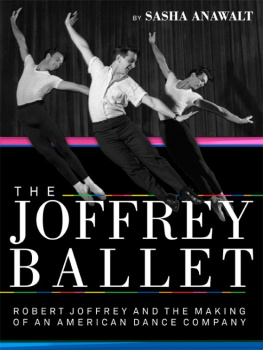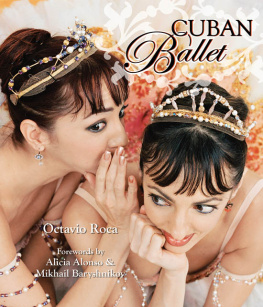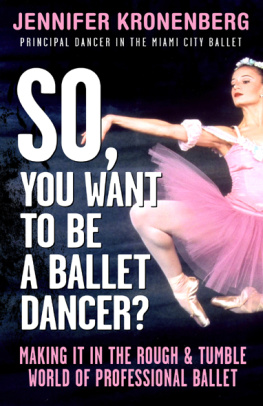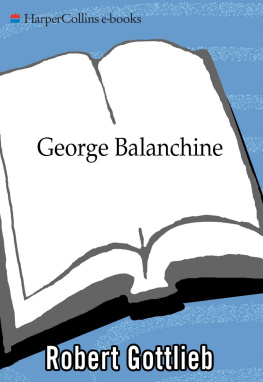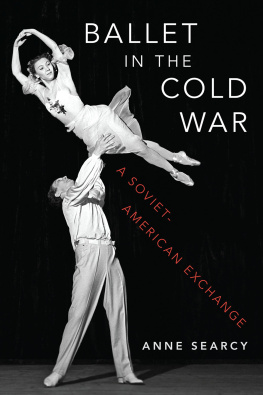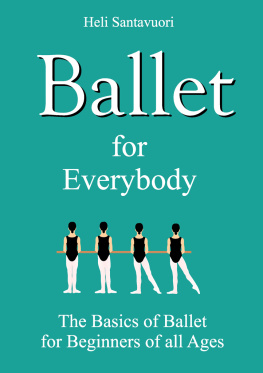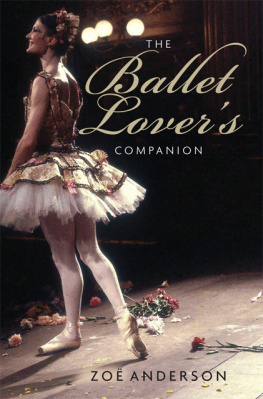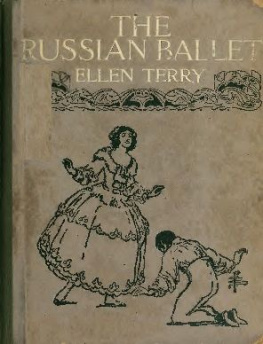THE JOFFREY BALLET
ROBERT JOFFREY
AND THE MAKING OF
AN AMERICAN DANCE COMPANY
SASHA ANAWALT
SCRIBNER
1230 Avenue of the Americas
New York, NY 10020
Copyright 1996 by Sasha Anawalt
All rights reserved, including the right of reproduction
in whole or in part in any form.
SCRIBNER and design are trademarks of Simon & Schuster Inc.
DESIGNED BY ERICH HOEBING
Set in Saban
Manufactured in the United States of America
3 5 7 9 10 8 6 4 2
Library of Congress Cataloging-in-Publication Data
Anawalt, Sasha, 1956
The Joffrey Ballet: Robert Joffrey and the Making
of an American dance company / Sasha Anawalt.
p. cm.
Includes bibliographical references and index.
(alk. paper)
1, Joffrey Ballet-History. 2. Joffrey, Rohert. 3. Ballet dancers-United StatesBiography.
4. Choreographers-United States-Biography. I. Title,
GV1786.J65AS3 1996
796'.8'0973-dc20 96-32454
CIP
ISBN 0-684-19724-3
Cover photo by Jack Mitchell
(Left to right) Nels Jorgensen, Robert Joffrey, and Paul Sutherland
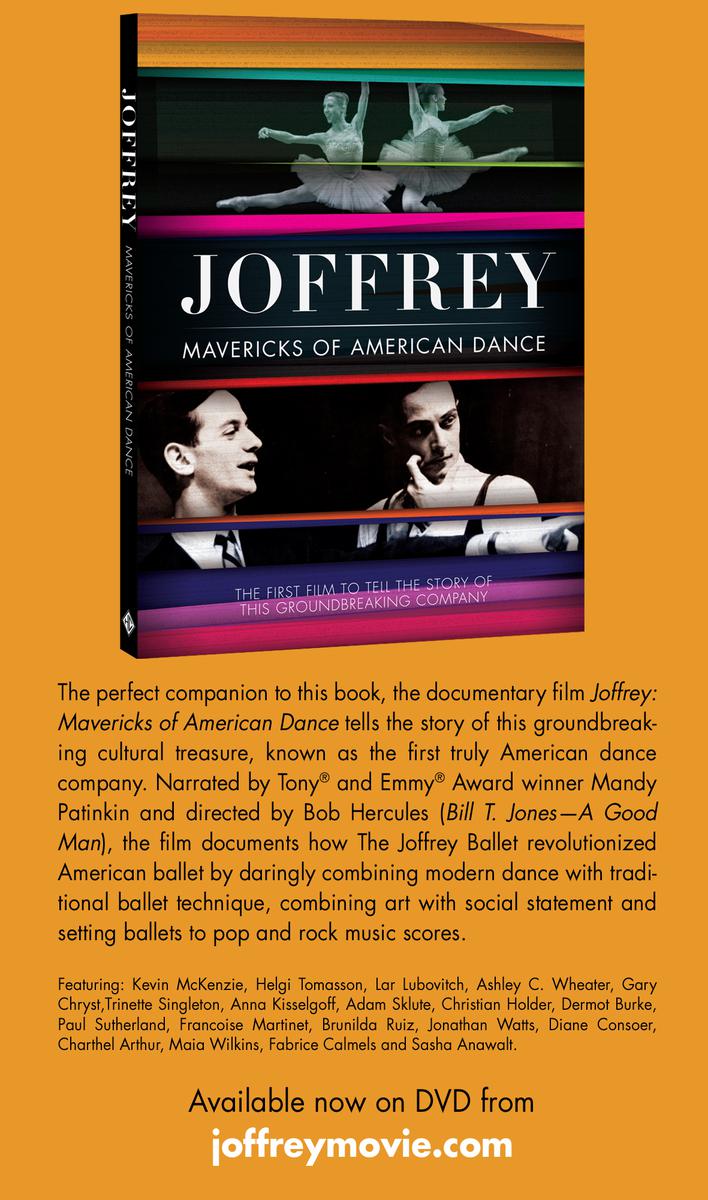
To
William Bernard Anawalt
Katharine de Lancey Anawalt
Thomas Cunningham Anawalt
Lucy Spalding Anawalt
Thank you to Patricia Freeman, writer, editor, marketer, journalist and friend without whom this e-book would not exist. She broke through electronic barriers, translating and transforming print into a digital manuscript with the tirelessness and stubborn dedication of a pioneer. Her eye, her ear, her grasp and passion for text brought this project to life. When she and I combed through the text multiple times, my gratitude to all those who opened their doors and scrapbooks and memories and had originally given so fully to this 1996 cultural history of the Joffrey Ballet likewise multiplied. This story is their story. I thank them again sixteen years later and stand, not surprised, but in awe that the company is still dancing, new chapters can be written, a documentary film has been made and Robert Joffrey and Gerald Arpino continue to be remembered. Their influence on American arts and culture is perhaps more evident.
I am also grateful to my agent Jane Dystel and to Abby Reilly at Dystel & Goderich Literary Management for shepherding the e-book process.
Sasha Anawalt
January 2012
USC Annenberg School for Communication & Journalism
Professor and Director, Arts Journalism Programs
Sasha.Anawalt@gmail.com
@SashaAnawalt
Contents
Author's Note 9
A Joffrey Ballet: Astarte
PART ONE: BREAKING GROUND
1. The Chili Recipe 17
2. Finding Ballet 23
3. Gerald Arpino 31
4. Coming of Age 41
5. New York, New York 55
6. Dancer to Choreographer 67
7. In Good Company 75
8. Adversity 83
PART TWO: CORNERSTONE
9. Six Dancers and a Station Wagon 97
10. Quarrying the Repertoire 113
11. The Models 125
12. Rebekah Harkness Kean 141
13. Ambassador 153
14. Treachery at Watch Hill 163
15. President Kennedy and the USSR 175
16. The Split 187
PART THREE: THRESHOLD
17. The Nation's Closet 199
18. City Center Joffrey Ballet 209
19. Image 223
The Green Table
. Astarte
22. The Dance Spirit 251
23. Crossing Over 267
24. Muses 291
PART FOUR: HOME
25. The Ashes 309
26. Los Angeles 325
27. Sacrifices 337
The Nutcracker
Afterword 355
Notes 365
Bibliography 387
Chronology of Works 391
Acknowledgments 441
Index 443
Author's Note
"Girls, come on, Fonteyn and Nureyev in Romeo and Juliet. We've got to go," my mother said, while showing us how to stuff our pajamas into our snowsuits so that we looked presentable enough for the Metropolitan Opera House. We would stay for the first part, then dash back to our apartment. With our nightclothes already on, my sister and I could jump into bed and get enough sleep for school the next day. In my family, going to the ballet was an adventure.
Our dinner table conversations revolved around dance. My parents wanted to know what we thought about different performances and the reasons behind our opinions. My mother started to write about dance. My father, a painter, started to concentrate more on figure work.
I saw my first of many Joffrey Ballet performances in 1966. There were as many, if not more, trips to the New York City Ballet and American Ballet Theatre and the Royal Ballet and Martha Graham. We lived near Jacob's Pillow Dance Festival in the summers and saw everything, embracing director Ted Shawn's approach that a balance of ballet, modern, and ethnic forms provided the best diet for anyone interested in movement. It was a sensibility not altogether different from Robert Joffrey's.
When I became a critic at the Los Angeles Herald Examiner at the end of 1983, I thought it was absolutely wrong that the Joffrey Ballet's history had not been recorded in a book. Flashing through my mind, almost as vividly as if I had seen them yesterday, appeared Lisa Bradley and Maximiliano Zomosa and Robert Blankshine and Gary Chryst and Rebecca Wright and Christian Holder and Francesca Corkle. They were some of the Joffrey dancers who made me see, and made the act of seeing into something important and vital. They enchanted me. W. H. Auden said, "The state of enchantment is one of certainty. When enchanted, we neither believe nor doubt nor deny: we know, even if, as in the case of a false enchantment, our knowledge is self-deception."
I knew. But I was curious to know why. Why did Joffrey create the company he did? In order to answer the question it became imperative to examine his childhood, his early training, and his formative years. His roots and heritage are largely undocumented.
Joffrey cared about his image. He had an effective publicity machine. I doubted the versions the public knew. He fascinated me, and I was determined to know him better. I had interviewed him formally twice. I have never been to his residence. Although I have had cooperation on this book from Gerald Arpino, Rima Corben, and Edith D' Addario of the Joffrey Ballet and School, I have generously been left alone to dig. I made my own path to him. I then asked how. How did Joffrey and Arpino, with no connections, no money, get started and keep the company running for more than forty years? They were first-generation Americans-ballet professionals, but also entrepreneurs-and I had a hunch that in learning about them I would begin to see something about the history of American performing arts.
I went to St. Paul's School in Concord, New Hampshire, for high school in 1971, and Rochelle Zide, an ex-Joffrey dancer, was on the faculty. I took her ballet class, in part, because I had studied ballet at American Ballet Theatre and at Margaret Craske's school in the Village and I missed the regular discipline. I relocated to Los Angeles in 1980; the Joffrey Ballet moved there into the Dorothy Chandler Pavilion three years later. By then I was a dance critic. It seemed no matter where I went, there was the Joffrey.
When I decided to write this book, I had to go home many times to New York to do research. In my old bedroom, I opened the door to my closet. There were stacks of Joffrey programs that my mother had saved. Not only programs, bur souvenir brochures and newspaper clippings and press releases. I couldn't help feeling that this book had been waiting for me to write it.
This is a personal exercise and an adventure. It is about knowing. It is about discovering the distinction between false and real enchantment. A master teacher, Robert Joffrey had a sure instinct for both. Auden continues his explanation by saying, "When we are truly enchanted we desire nothing for ourselves, only that the enchanting object or person shall continue to exist. When we are falsely enchanted, we desire either to possess the enchanting being or be possessed by it." I wrote this book so that Joffrey and the performances he made happen will fade less quickly and so that everyone can take a look.
Next page
